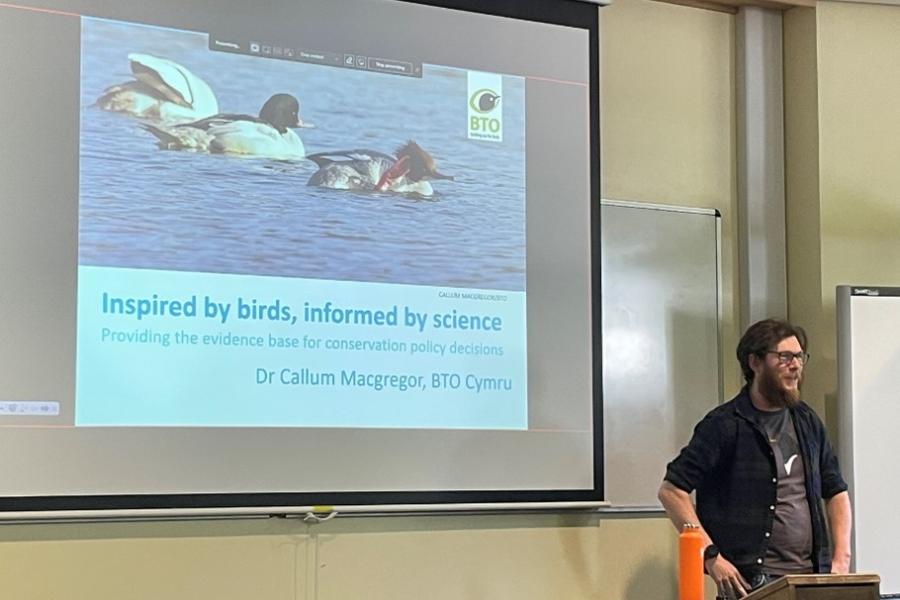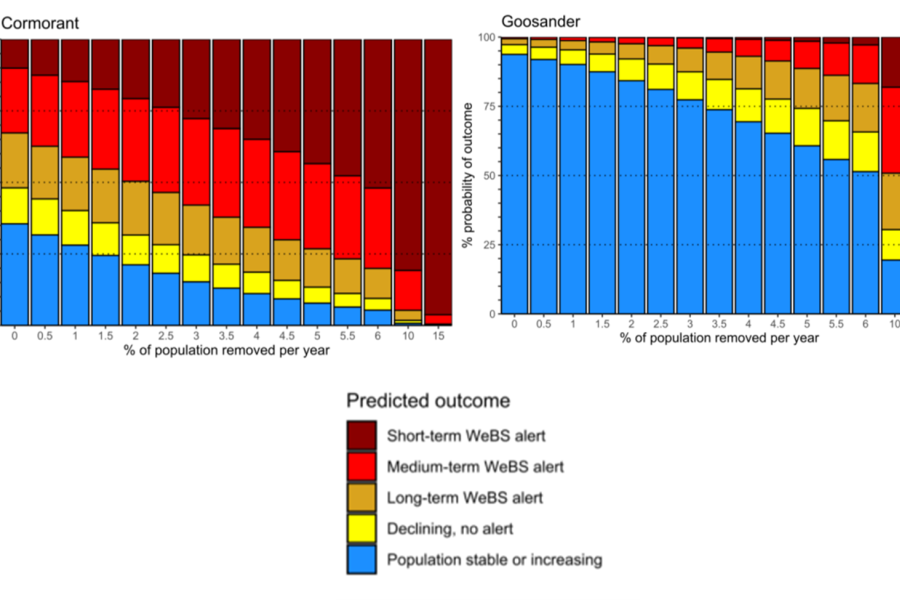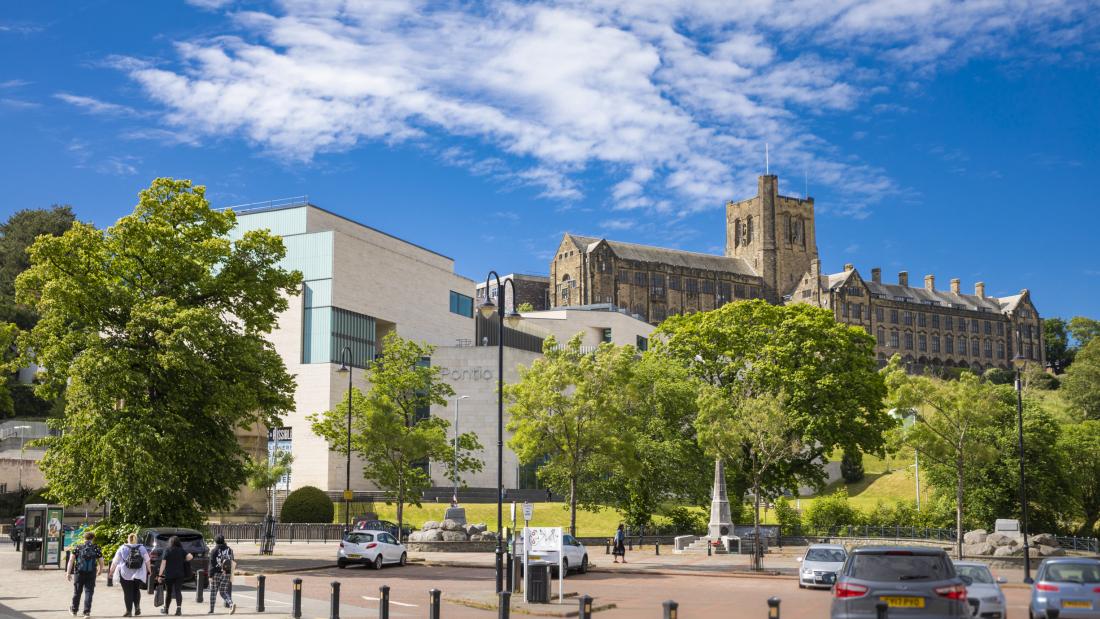The importance of using evidence for conservation initiatives and policy decisions has been gaining significant traction over the years as individuals and stakeholders both want to use their limited resources in an efficient manner. However, in order to conduct such actions or decisions, an underlying evidence-base has to be established. In our second seminar in the series we had the opportunity to hear about a fascinating study carried out to inform a potentially controversial policy-decision in Wales.

A team of researchers and volunteers led by Dr. Callum Macgregor from the British Trust for Ornithology Wales (BTO-Wales) was tasked by Natural Resources Wales (NRW) to conduct a study on predation of Atlantic salmon (Salmo salar) by Cormorant (Phalacrocorax carbo) and Goosanders (Mergus merganser) on Atlantic Salmon (Salmo salar). Salmon’s population has been declining significantly over the past couple of years2 and Cormorant and Goosanders are nationally protected. NRW wanted to know how allowing lethal control of Cormorant and Goosander would impact on the populations of both salmon and the fish.
During the 2020 - 2021 wintering period, BTO-Wales systematically surveyed 10 main river systems across Wales covering 2,284 km2 and determined the baseline population of Cormorant and Goosander to be 2,894 and 1,460 respectively. Cormorants’ largest populations were found at Dee, Wye and Usk, while Goosanders were at Wye, Usk and Dee. Based on a full re-survey of the Usk river in spring, the researchers noted no difference in the Cormorant population, however,
the Goosander population was significantly lower due to males leaving the site as part of their moulting period.
A follow-up survey was conducted within the Usk river in pinchpoints as they're suitable habitats for salmon smolts to rest in during the day. Based on 391 observations, the researchers found no statistical evidence to support that Cormorants are more active in pinch-points and predating on smolts, as they had only documented one instance of predation occurring. On the contrary, Goosanders were significantly more active within these areas in contrast to controls, indicating there might be evidence that specialization on smolt predation is occurring during smolt runs .
Lastly, the researchers attempted to assess the Cormorant and Goosander's resilience should licensed lethal control measures were to be implemented by conducting a population viability analysis. They discovered that based on population modelling using BTO's WeBS Alerts system (3), the Cormorant's population is already at risk of declining, leading to a chance in conservation status without any culling scenarios implemented. Meanwhile Goosander's population is highly likely to keep increasing even with a 5% culling scenario.

BTO-Wales's research was forwarded to NRW’s to decide whether culling protocols are to be implemented or not. Any further queries about this study or requests for reports can be directed to Dr. Callum Macgregor at callum.macgregor@bto.org.
References
1. Sutherland, W. J., Pullin, A. S., Dolman, P. M. and Knight, T. M. (2004) ‘The need for evidence-based conservation’, Trends in Ecology & Evolution, 19(6), pp. 305–308. doi: 10.1016/j.tree.2004.03.018.
2. Centre for Environment, Fisheries and Aquaculture Science (2022) Salmon Stocks and Fisheries in England and Wales in 2021. Suffolk, United Kingdom. Available at: https://assets.publishing.service.gov.uk/government/uploads/system/uploads/attachment_data/file/1093963/SalmonReport-2021-assessment.pdf.
3. Woodward, I. D., Frost, T. M., Hammond, M. J. and Austin, G. . (2019) Wetland Bird Survey Alerts 2016/2017: Changes in numbers of wintering waterbirds in the Constituent Countries of the United Kingdom, Special Protection Areas (SPAs), Sites of Special Scientific Interest (SSSIs) and Areas of Special Scientific interest (ASSIs). BTO Research Report. Available at: https://app.bto.org/webs-reporting/alerts.jsp.

